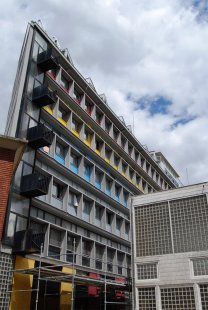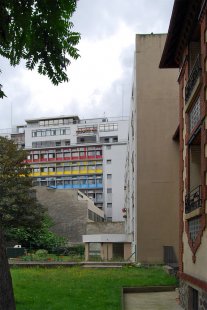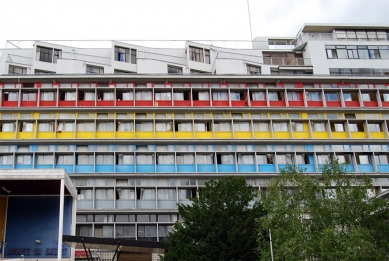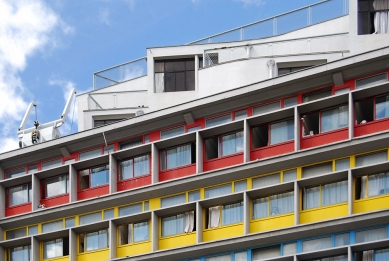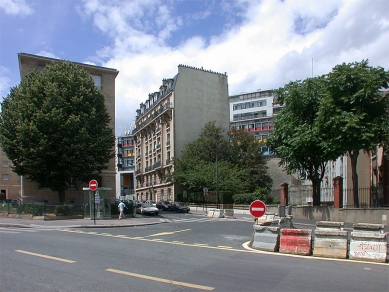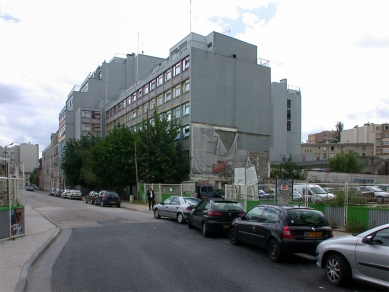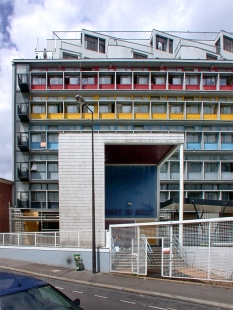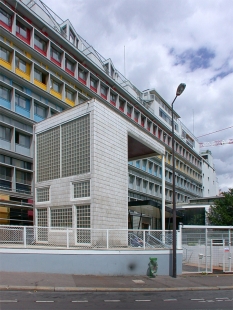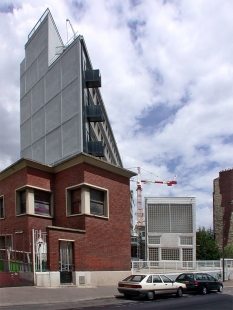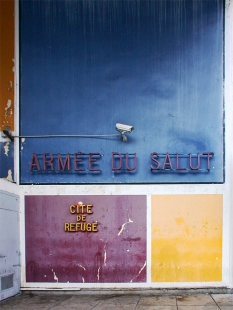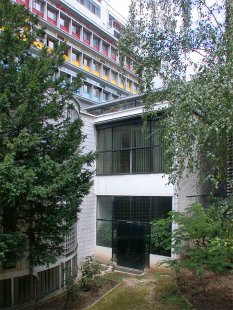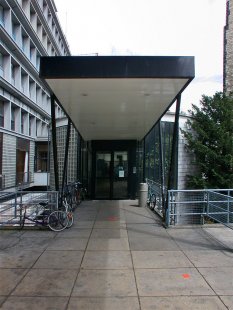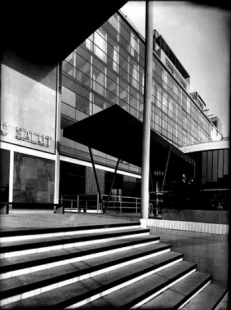
House of the Salvation Army
City of Refuge

S Winnarettou Singer, the princess of Edmond de Polignac, Le Corbusier was introduced through a circle of friends of his musician brother Albert Jeanneret. This noblewoman was a significant patron of the musical avant-garde of the 1920s and took an interest in Le Corbusier when he presented the design for her villa Polignac to her in July 1926, which was being developed around the same time as the designs for the villas for American William Cook (Boulogne-Billancourt, 1926-27) and Michael and Sarah Stein (Vaucresson, 1926-28). The villa was ultimately never built. Nevertheless, the princess played an important role between Le Corbusier and the Salvation Army. She helped Le Corbusier gradually obtain larger commissions from them: the first was an extension to the Palais du peuple on rue des Cordelières (a three-story house on stilts with a roof terrace) from 1926-27; the conversion of the boat Louise-Catherine into a floating hostel docked on the Seine near the viaduct of the Gare d'Austerlitz subway stop in 1929-30; and finally, the Cité de refuge project on rue Cantagrel was developed between 1929-33 for approximately six million francs (half of which was donated by Princess de Polignac and the other half funded by the Salvation Army).
Behind a glass and steel facade covering one thousand square meters, Le Corbusier envisioned a hermetically sealed world flooded with light, but without any openings or windows: the Cité de refuge was to use “precise breathing” in both summer and winter weather with the help of air conditioning. Le Corbusier had to strongly advocate for these new technologies. From May 1929 to March 1931, when construction began, he came up with five designs. Meanwhile, the construction program also changed – an additional plot of land was acquired toward rue Chevaleret for the steep site on rue Cantagrel. Although Paul-Henri Nénot, the president of the city council for public works, strongly opposed the building's large dimensions, after several concessions, a construction permit was granted in April 1931: however, the terraces had to be stepped down to rue Chevaleret and the glass walls inclined. The project also included several tricks: the permit mentioned window openings that were ultimately not realized.
Due to financial reasons, Le Corbusier ultimately failed to install air conditioning in the building, only managing a mechanical ventilation system. In winter, the central heating worked excellently, but during the first summer, the unventilated rooms on the upper floors became uninhabitable. The architect managed to resist for some time, but two years later (1935), he received a court order delivered through police authorities, requiring that a window be built in each room within forty days, and thus the facade of the building acquired the plastic square layout as we know it today.
Behind a glass and steel facade covering one thousand square meters, Le Corbusier envisioned a hermetically sealed world flooded with light, but without any openings or windows: the Cité de refuge was to use “precise breathing” in both summer and winter weather with the help of air conditioning. Le Corbusier had to strongly advocate for these new technologies. From May 1929 to March 1931, when construction began, he came up with five designs. Meanwhile, the construction program also changed – an additional plot of land was acquired toward rue Chevaleret for the steep site on rue Cantagrel. Although Paul-Henri Nénot, the president of the city council for public works, strongly opposed the building's large dimensions, after several concessions, a construction permit was granted in April 1931: however, the terraces had to be stepped down to rue Chevaleret and the glass walls inclined. The project also included several tricks: the permit mentioned window openings that were ultimately not realized.
Due to financial reasons, Le Corbusier ultimately failed to install air conditioning in the building, only managing a mechanical ventilation system. In winter, the central heating worked excellently, but during the first summer, the unventilated rooms on the upper floors became uninhabitable. The architect managed to resist for some time, but two years later (1935), he received a court order delivered through police authorities, requiring that a window be built in each room within forty days, and thus the facade of the building acquired the plastic square layout as we know it today.
The English translation is powered by AI tool. Switch to Czech to view the original text source.
0 comments
add comment



